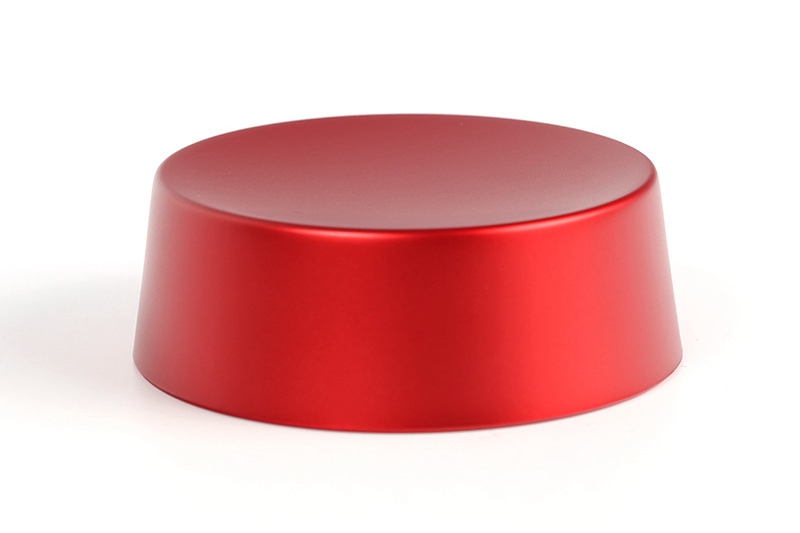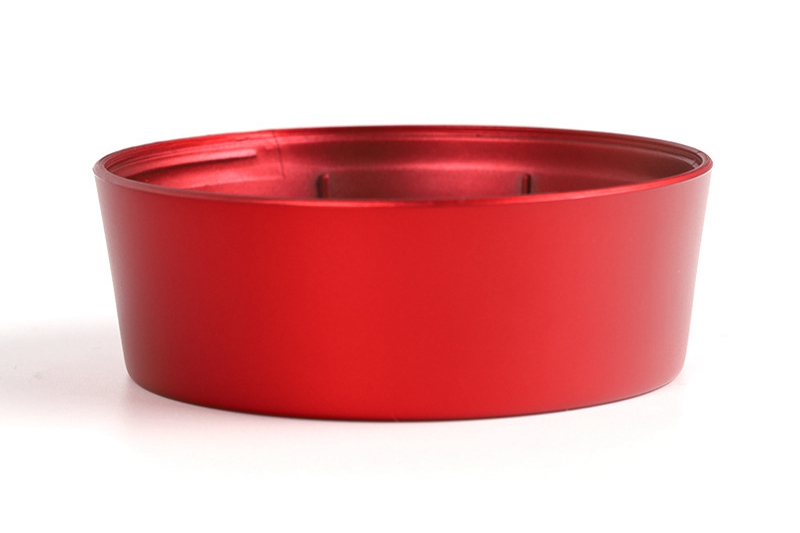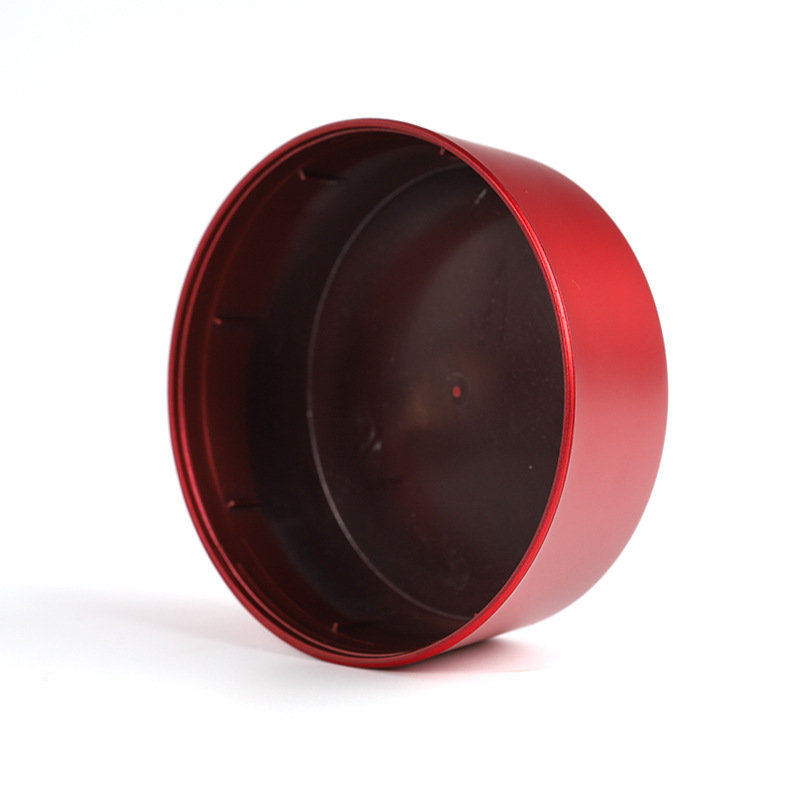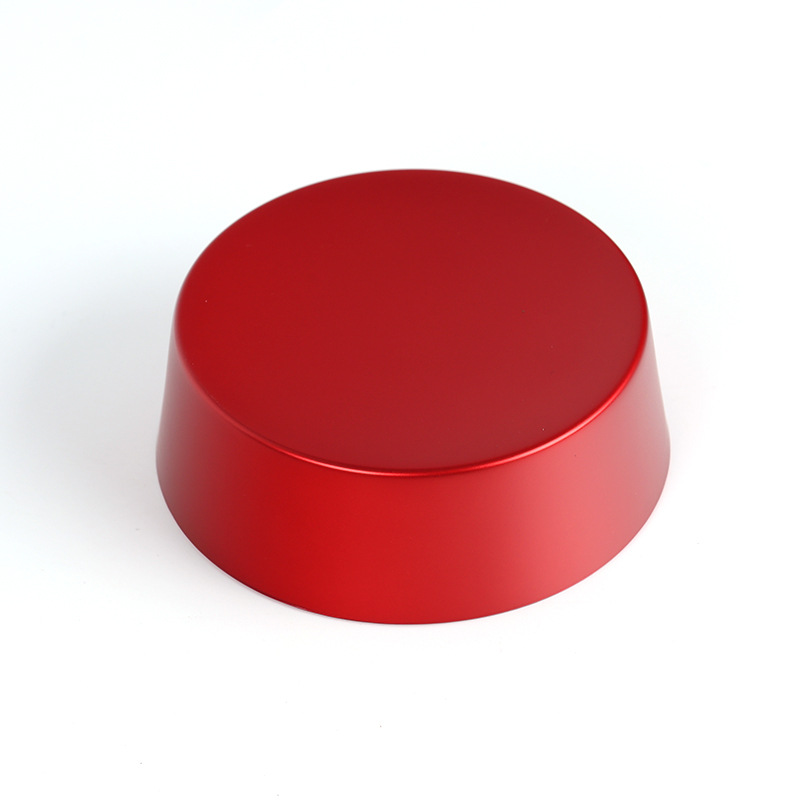Painting Process Explained: Techniques, Materials, and Benefits
Painting is a fundamental surface treatment technique used across various industries to enhance the appearance, protect the integrity, and extend the lifespan of materials. Painting is crucial in ensuring aesthetic appeal and functional performance, whether it's a sleek car exterior, durable industrial equipment, or decorative household items.
In this article, we will delve into the intricacies of painting by exploring six key aspects: the painting process, the materials that can be used, surface finish requirements of electroplated substrates, types and performance of spraying, the functions of painting, and how it compares to other surface treatments. By understanding these elements, you will gain a comprehensive overview of painting as a versatile and essential method in surface finishing.

Painting Process
The painting process is a systematic approach to applying a protective or decorative coating to a surface. It involves several key steps to ensure a high-quality finish that adheres well and provides long-lasting protection.
Surface Preparation
The first and most critical step in the painting process is surface preparation. It involves cleaning the surface to remove dirt, grease, rust, and other contaminants affecting paint adhesion. Common methods include:
Mechanical Abrasion: Sanding, grinding, or blasting to remove old paint and smooth the surface.
Chemical Cleaning: Using solvents or detergents to dissolve and remove contaminants.
Degreasing: Ensuring the surface is free from oils and greases.
Priming
After the surface is prepared correctly, a primer is applied. The primer serves several functions:
Adhesion: It provides a good bonding surface for the paint.
Corrosion Resistance: It protects the substrate from rust and corrosion.
Sealing: It seals porous surfaces to prevent absorption of the topcoat.
Painting
Once the primer is dry, the actual painting process begins. There are several techniques for applying paint, each suited to different applications:
Brush Painting: Ideal for small areas and detailed work. It allows for precision but can be time-consuming and may leave brush marks.
Spray Painting: Common in industrial and automotive applications. It offers a smooth, even finish and efficiently covers large areas quickly.
Dipping: Used for small parts or items that require complete coverage. The object is submerged in paint, ensuring all surfaces are coated.
Curing
The final step is curing, where the paint is allowed to dry and harden. It can be achieved through:
Air Drying: Allowing the paint to dry at room temperature. It is suitable for many paints but can take several hours to days.
Oven Baking: Using heat to accelerate the curing process. It is common in industrial applications and results in a more complex, durable finish.
Quality Control
Quality control measures are essential throughout the painting to ensure a high-quality finish. It includes:
Inspection: Checking for defects such as runs, sags, or missed spots.
Testing: Performing adhesion tests, thickness measurements, and visual inspections to ensure compliance with specifications.
Materials That Can Be Used for Painting
Selecting suitable materials for painting is crucial for achieving the desired finish and ensuring the longevity of the coating. Various paints and substrates are used, each with specific properties and applications.
Types of Paints
Acrylic Paints
Characteristics: Water-based, quick-drying, and low in volatile organic compounds (VOCs).
Applications: Ideal for automotive, architectural, and industrial uses where environmental concerns are a priority.
Enamel Paints
Characteristics: Oil-based or solvent-based, durable, and provides a glossy finish.
Applications: Used for surfaces requiring a hard, wear-resistant finish, such as appliances, machinery, and metal structures.
Latex Paints
Characteristics: Water-based, flexible, and easy to clean up.
Applications: Commonly used in residential and commercial buildings for interior and exterior walls.
Epoxy Paints
Characteristics: Two-component system that provides excellent adhesion, chemical resistance, and durability.
Applications: Suitable for floors, industrial equipment, and surfaces exposed to harsh environments.
Polyurethane Paints
Characteristics: Highly durable, resistant to abrasion and chemicals, and available in various finishes.
Applications: Often used for automotive, aerospace, and marine applications.
Suitable Substrates
Metals
Examples: Steel, aluminum, and galvanized steel.
Considerations: Requires thorough cleaning and often a primer to ensure proper adhesion and prevent corrosion.
Plastics
Examples: Polyethylene, polypropylene, and ABS.
Considerations: Surface preparation is critical to overcome low surface energy. Adhesion promoters or primers are often used.
Ceramics
Examples: Tiles, pottery, and sanitaryware.
Considerations: A specialized paint that can adhere to the non-porous surface and withstand high temperatures is required.
Wood
Examples: Furniture, cabinetry, and trim.
Considerations: Sanding is needed to smooth the surface; sometimes, a sealer is needed to prevent paint absorption and ensure a uniform finish.
Special Considerations for Different Materials
Metals: Ensure rust and contaminants are completely removed. Use primers that inhibit corrosion and promote adhesion.
Plastics: Use flame treatment or chemical etching to improve adhesion. Choose paints explicitly formulated for plastic surfaces.
Ceramics: Use epoxy or urethane paints for durability and heat resistance.
Wood: Consider the moisture content and grain of the wood. Seal knots to prevent resin bleed and use compatible primers and topcoats.

Types and Performance of Spraying
Spraying is a versatile and efficient method for applying paint to various surfaces. Different spraying techniques offer unique advantages and performance characteristics, making them suitable for specific applications. This section explores the main types of spraying and their performance metrics.
Different Spraying Techniques
Air Spraying
Method: Uses compressed air to atomize the paint into fine particles, creating a smooth and even coating.
Advantages: High-quality finish, excellent control over paint flow and pattern.
Disadvantages: High overspray, requires proper ventilation and protective equipment.
Applications: Automotive, furniture, and detailed industrial work where finish quality is paramount.
Airless Spraying
Method: Paint is pumped at high pressure through a small nozzle, atomizing it without using compressed air.
Advantages: Fast application, thicker coatings, and less overspray than air spraying.
Disadvantages: It requires more skill to achieve a fine finish and a higher initial equipment cost.
Applications: Large industrial structures, exterior walls, and surfaces requiring thick, durable coatings.
Electrostatic Spraying
Method: Paint particles are charged electrically and attracted to the oppositely charged substrate, ensuring an even coat.
Advantages: Reduced overspray, high transfer efficiency, excellent adhesion.
Disadvantages: It requires specialized equipment, which is effective only on conductive substrates.
Applications: Automotive parts, appliances, metal furniture, and other conductive materials.
HVLP (High Volume Low Pressure) Spraying
Method: Uses a high air volume at low pressure to atomize the paint, reducing overspray and waste.
Advantages: High transfer efficiency, reduced overspray, environmentally friendly.
Disadvantages: Slower application speed, less suitable for thick coatings.
Applications: Fine finishing on woodwork, automotive, and detailed industrial parts.
Performance Characteristics
Coverage
Air Spraying: Offers excellent coverage with a fine finish, ideal for detailed work.
Airless Spraying: Provides good coverage and is suitable for large surfaces and thick coatings.
Electrostatic Spraying: Ensures even coverage with minimal overspray, especially on complex shapes.
HVLP Spraying: Delivers precise coverage with minimal waste, which is best for delicate finishes.
Finish Quality
Air Spraying: Superior finish quality with a smooth and glossy appearance.
Airless Spraying: Good finish quality may require skilled operation to match air spraying.
Electrostatic Spraying: High-quality finish with excellent uniformity, particularly on metal surfaces.
HVLP Spraying: Excellent finish quality, focusing on reducing overspray and improving transfer efficiency.
Efficiency
Air Spraying: Moderate efficiency due to high overspray and material waste.
Airless Spraying: High efficiency for large-scale applications, with less overspray.
Electrostatic Spraying: Very high efficiency, with over 90% transfer efficiency in some cases.
HVLP Spraying: It is highly efficient and reduces overspray and material waste.
Environmental Impact
Air Spraying: Higher environmental impact due to overspray and VOC emissions.
Airless Spraying: Moderate impact, with less overspray but potential for thicker coatings.
Electrostatic Spraying: Lower impact due to high transfer efficiency and reduced waste.
HVLP Spraying: Environmentally friendly, with low overspray and efficient material use.
Comparison of Spraying Methods and Their Applications
Air Spraying: Best for high-quality finishes on detailed and small-scale projects. Commonly used in automotive refinishing, furniture, and detailed industrial applications.
Airless Spraying: Ideal for large surfaces and projects requiring thick, durable coatings. Frequently used in industrial and construction settings.
Electrostatic Spraying: Excellent for coating metal objects with complex shapes, providing uniform coverage and high efficiency. Widely used in the automotive and appliance industries.
HVLP Spraying: Suitable for fine finishing with a focus on efficiency and reduced environmental impact. Often used in woodworking, automotive, and smaller industrial applications.
Functions of Painting
Painting serves multiple essential functions, from aesthetic enhancement to protective and functional purposes. Understanding these functions helps select the right paint and application method for various needs.
Protective Functions
Corrosion Resistance
Description: Paint is a barrier between the substrate and environmental elements, such as moisture, chemicals, and salts, which can cause corrosion.
Applications: Used extensively in automotive, marine, and industrial sectors to protect metal structures, machinery, and vehicles from rust and corrosion.
UV Protection
Description: Specialized paints contain UV inhibitors that protect surfaces from the damaging effects of ultraviolet radiation, which can cause fading, chalking, and degradation.
Applications: Commonly used in outdoor applications, including buildings, vehicles, and outdoor furniture, to maintain color and structural integrity.
Moisture Resistance
Description: Paints can form a waterproof layer that prevents moisture from penetrating the substrate, thus preventing mold, mildew, and rot.
Applications: Crucial for structures exposed to high humidity or direct contact with water, such as bathrooms, kitchens, and exterior woodwork.
Aesthetic Functions
Color
Description: Paint provides endless colors to suit aesthetic preferences and branding requirements.
Applications: Used in residential, commercial, and industrial environments to enhance appearance and convey specific themes or brand identities.
Gloss
Description: Paints come in various gloss levels, from matte to high gloss, affecting the surface’s light reflection and visual appeal.
Applications: Glossy finishes are often used in automotive and furniture applications for a sleek look, while matte finishes are preferred for walls and ceilings to reduce glare.
Texture
Description: Textured paints can create unique surface finishes, adding depth and character to walls and other surfaces.
Applications: Used in interior design to create visual interest and hide minor surface imperfections on walls and ceilings.
Custom Designs
Description: Paint allows for custom designs and artistic effects, including murals, stenciling, and faux finishes.
Applications: Popular in commercial spaces, themed environments, and artistic installations.

Functional Coatings
Anti-Slip
Description: Paints with anti-slip properties improve surface traction, reducing the risk of slips and falls.
Applications: Frequently used on floors in industrial facilities, staircases, and walkways.
Anti-Graffiti
Description: Anti-graffiti coatings make it easier to remove graffiti without damaging the underlying paint.
Applications: Used on public buildings, transport vehicles, and other structures susceptible to vandalism.
Thermal Insulation
Description: Paints with thermal insulating properties help reduce heat transfer, improving energy efficiency.
Applications: Applied on building exteriors, roofs, and industrial equipment to regulate temperature and reduce energy consumption.
Comparison with Other Surface Treatments
Painting is one of several surface treatment options available in manufacturing and other industries. Each method offers unique benefits and limitations, making it essential to compare them to understand their relative advantages and applications.
Comparison with Electroplating
Advantages of Electroplating
Durability: Provides a rigid and wear-resistant surface.
Corrosion Resistance: Offers excellent protection against corrosion, especially when using materials like zinc, nickel, or chrome.
Aesthetic Appeal: Creates a smooth, shiny, and aesthetically pleasing finish.
Advantages of Painting
Color Variety: Unlimited color options and finishes (matte, gloss, textured).
Flexibility: Can be applied to a wide range of materials, including metals, plastics, and wood.
Lower Cost: Generally less expensive than electroplating, especially for large surfaces or complex shapes.
Comparison with Anodizing
Advantages of Anodizing
Durability: Produces a rigid, wear-resistant surface, especially on aluminum.
Corrosion Resistance: Excellent protection against corrosion.
Aesthetic Appeal: This can add color and a decorative finish integral to the material.
Advantages of Painting
Customization: More options for colors, finishes, and textures.
Application: Can be used in a broader range of materials and surfaces.
Repairability: Easier to touch up and repair compared to anodized surfaces.
Comparison with Powder Coating
Advantages of Powder Coating
Durability: This creates a thick, hard, more durable finish than conventional paint.
Environmental Impact: Contains no solvents, reducing VOC emissions.
Efficiency: High transfer efficiency and minimal waste during application.
Advantages of Painting
Flexibility: Easier to apply to large or complex surfaces and objects.
Finish Variety: Offers more diverse finish options, including high-gloss, matte, and textured finishes.
Initial Cost: Lower initial setup costs compared to powder coating.
Comparison with Polishing
Advantages of Polishing
Aesthetic Appeal: Provides a high-gloss, mirror-like finish that is highly reflective.
Smoothness: This creates an exceptionally smooth surface free of defects.
Advantages of Painting
Protective Functions: Adds protection against corrosion, UV damage, and moisture.
Color and Texture: Offers a wide range of colors and textures that polishing cannot achieve.
Coverage: Can cover and protect larger surface areas more effectively.
Criteria for Choosing the Appropriate Surface Treatment
Application Requirements
Durability Needs: Consider the expected wear and tear on the surface. Electroplating and powder coating offers high durability, while painting provides sufficient protection for less demanding applications.
Environmental Exposure: For surfaces exposed to harsh environments, corrosion resistance is crucial. Anodizing, electroplating, and certain paints (e.g., marine paints) are suitable.
Aesthetic Preferences
Finish Quality: If a high-gloss, reflective finish is desired, polishing and certain paints are ideal. For more diverse color and texture options, painting is the best choice.
Branding and Customization: Painting offers the most flexibility in terms of colors, designs, and custom finishes.
Cost Considerations
Initial Investment: Painting generally requires a lower initial investment than electroplating and powder coating.
Maintenance and Repair: Consider the ease of maintenance and repair. Painted surfaces are typically easier to touch up than electroplated or powder-coated surfaces.
Material Compatibility
Substrate Type: Ensure the chosen surface treatment is compatible with the substrate material. Painting is versatile and can be applied to metals, plastics, and wood. At the same time, other treatments may be limited to specific materials.

